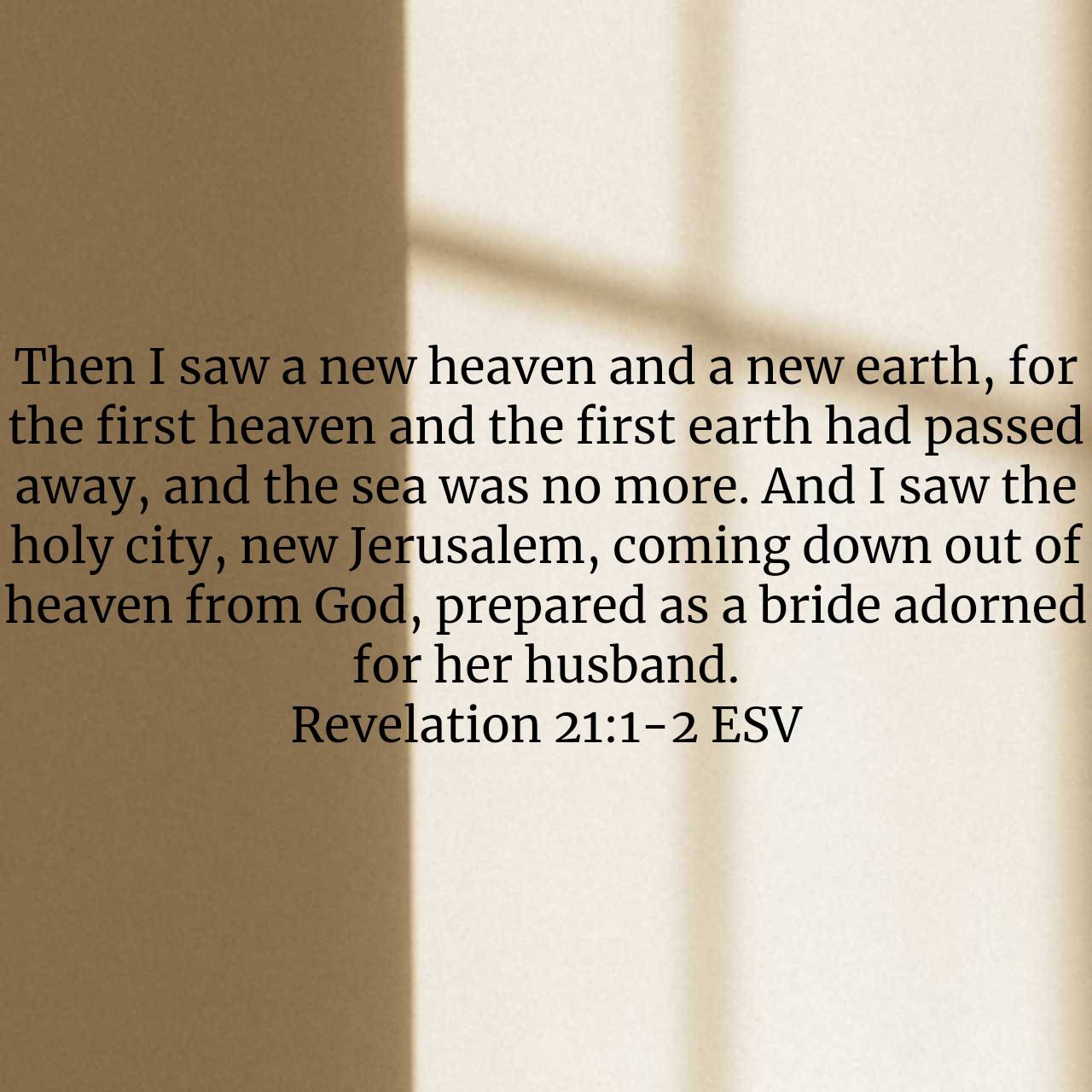Devotional 03 May 2025

When we read of a “new heaven and new earth,” many instinctively think of life after death. But the imagery John uses in Revelation 20 and 21 draws heavily from Ezekiel’s prophetic sequence—resurrection of the dry bones (Ezek. 37), the destruction of Gog and Magog (Ezek. 38–39), and the vision of a new temple (Ezek. 40–48). In Revelation, the Church is first seen as an army (Rev. 19:14), then as angels or messengers (Rev. 21:9), then as a bride, and now, as the holy city. These are not separate identities, but overlapping metaphors describing God’s people.
Isaiah 65:17–25 helps us interpret this rightly. In Isaiah’s vision of the new creation, people still build homes, have children, and even die (Isaiah 65:20). There are even still sinners in the “New Heaven and New Earth.” How could this describe the post-judgment state after death and Hades are already thrown into the lake of fire (Rev. 20:14)? Instead, it suggests a redemptive reality breaking into the present age.
John affirms this in 1 John 2:17, saying “the world is passing away,” echoing Isaiah’s language. Paul proclaims, “if anyone is in Christ, he is a new creation. The old has passed away; behold, the new has come” (2 Cor. 5:17). In Colossians 3:10–11, Paul calls believers to put on the new self where there is no longer Greek or Jew—a direct link to Revelation 21:1, where “the sea,” a symbol of separation and chaos of “the Gentiles” is no more. Now, all peoples are one in Christ.
This city, the bride, is not future alone—it is the Church now. Hebrews 12:22 tells us: “you have come to Mount Zion… the city of the living God, the heavenly Jerusalem.” It comes “from heaven” because we are not “of the world” (John 15:19; 1 John 4:5–6).
We are already citizens of this New Creation. This should inspire in us a great amount of joy and confidence, we are the city coming down from heaven. So let us live now as the people of the Eternal City, holy, bold, and radiant with God’s glory.